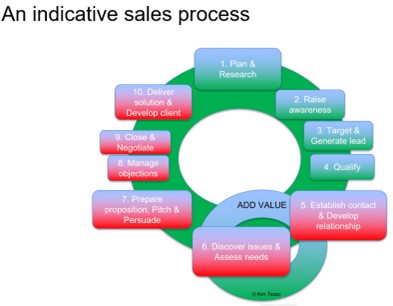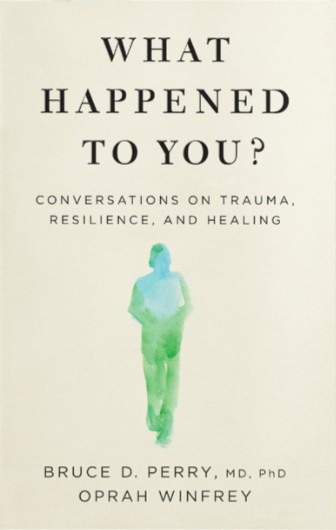
I first mentioned SCARF in an article about neuroscience and leadership Leadership: Lessons from Star Trek and Neuroscience – Kim Tasso back in 2012. There David Rock talked about the neuroscience of leadership – the need to still your mind, improve emotional regulation, watch non-verbal signals and take care with feedback. On feedback he mentioned research by Naomi Eisenberger showing that the brain treats social pain much like physical pain. Leadership conversation skills: SCARF model of neuroscience in social interactions, collaboration and relationships
The SCARF model
The premise of the SCARF model is that the brain makes us behave in certain ways to minimize threats and maximize rewards. Additionally, the drivers in the brain that take the threat and reward approach do so as if they were a primary need, such as food and water.
Neuroscience research findings help us see in very tangible ways (for example, by using functional MRIs) that our social needs are on par with our need for food and water. This new science has big implications for the workplace — a highly social situation.
During interactions, our brain is busy classifying everything with a “reward” or “threat” feeling in our body, which then registers in our behaviour. Our brains want to know, is something good for us or bad for us?
The SCARF model summarizes these two themes within a framework that captures the common factors that can activate a reward or threat response in social situations. You can apply and test this model in any situation in which people collaborate as part of a group.
The SCARF model involves five domains of human social experience: status, certainty, autonomy, relatedness, and fairness.
- Status is about where you are in relation to others around you. Your sense of personal worth
- Certainty concerns being able to predict the future
- Autonomy provides a sense of control over events
- Relatedness is a sense of safety with others, of friend rather than foe
- Fairness is a perception of impartial and just exchanges between people
Manage conversations
The idea is to use this model to manage interactions to minimize threats and maximize rewards in each of these five domains.
Then the objective is to activate reward response to motivate people more effectively using internal rewards.
When the brain and body register a social threat in these dimensions, they light up the networks of the brain that register the threat of physical pain, a finding that has substantial implications for leadership practices.
The SCARF model improves people’s capacity to understand and ultimately modify their own and other people’s behaviour in social situations like the workplace, allowing them to be more adaptive.
The model is especially relevant for leaders or anyone looking to build trust and influence others.
The more we understand about the workings of our brain and body responses, the more we understand what is happening to us moment-to-moment, whether that is why we can’t think straight after a long day or what’s going on with a relationship in our life.
To understand which of the five SCARF domains are key drivers for you, there is a free online self-assessment The NLI SCARF® Assessment | NeuroLeadership Institute
Rock, D. (2008). SCARF: A brain-based model for collaborating with and influencing others. Neuroleadership Journal, 1, 1–9.
The table shows the ideal components of conversations to activate reward states and things to avoid that activate the threat state.
| Five domains of human social experience (Drivers of our behaviour) | How we activate the reward state in others | Results of reward state | How we activate a threat state in others | Consequences of threat state |
| Status | Positive feedback
Public acknowledgement
Allow staff to provide feedback to themselves in performance reviews |
More cognitive resources available to us
More insights
More ideas for action
Fewer perceptual errors
Wider field of view – more open
|
Critique
Unsolicited advice |
Stressor hormones released
Reduced resources (oxygen and glucose) for brain function
Decreased cognition
Reduced working memory
Inhibits the brain perceiving subtler signals required for solving nonlinear problems in the insight or “aha” experience
Generalise more easily, which increases the chances of erring on the safe side and shrinking from opportunities
Increased defensive reactions in interactions
Small stressors more likely to be perceived as large stressors
Reduces range and field of view
Err on the side of pessimism |
| Certainty | Clear expectations
Set clear goals
Realistic project schedules |
Lack of transparency
Dishonesty
Unpredictability |
||
| Autonomy | Provide choices
Delegation
Self-responsibility
Empowerment |
Micromanagement
Constant authoritative leadership |
||
| Relatedness | Friendly gestures
Foster socialising
Mentoring |
Foster internal competition
Prohibit socialising in the workplace
|
||
| Fairness | Transparent decision
Open communication
Candidness
Clear rules |
Unequal treatment
Unclear rules and guidelines
Lack of communication |
The full research report: SCARF: a brain-based model for collaborating with and influencing others (nsw.gov.au)
It is also a helpful tool to understand what motivates employees. 5 Ways to Spark (or Destroy) Your Employees’ Motivation (neuroleadership.com)
During my training as a counsellor and psychotherapist I learned a lot about the fight, flight, freeze and fawn responses triggered by perceived threat. Typically, humans recover from these states quickly although trauma can fix people in one of these modes.
Related posts
How to start conversations that get results (kimtasso.com) September 2023
The EAST framework for behavioural nudges in marketing? (kimtasso.com) August 2023
Boosting Your Confidence at Work – A Toolbox for Success (kimtasso.com) July 2023
Conversation skills book review 3: Conversational intelligence (kimtasso.com) May 2023
Conversation skills book review 2 – How to talk to anyone: 92 little tricks (kimtasso.com) May 2023
Conversation skills book review (kimtasso.com) May 2023
Assertive communication: The importance of voice (kimtasso.com) May 2023
Connected leadership – How professional relationships (kimtasso.com) March 2023
Soft skills revisited – with a leadership perspective (kimtasso.com) November 2022
A general law of interpersonal relationships? (kimtasso.com) June 2022
Research on leadership and emotional intelligence (EQ) (kimtasso.com) September 2021
Building rapport in the digital space (kimtasso.com) June 2021
Better Business Relationships book by Kim Tasso (Bloomsbury) March 2021
Executive Engagement Strategies by Bev Burgess (kimtasso.com) August 2020
trust for better business relationships (kimtasso.com) February 2018
Leadership: Lessons from Star Trek and Neuroscience – Kim Tasso June 2012








